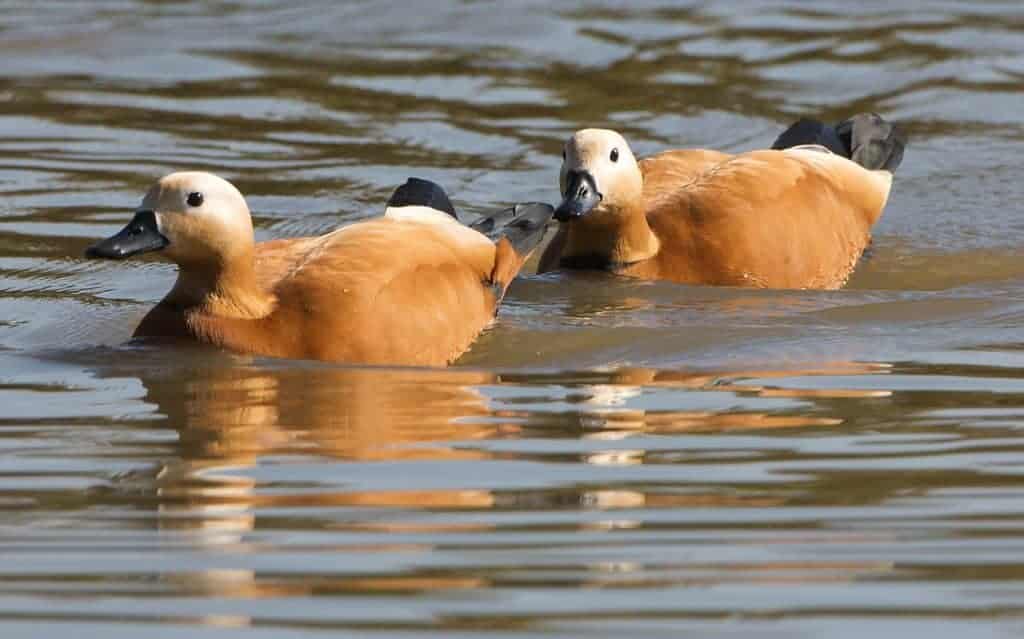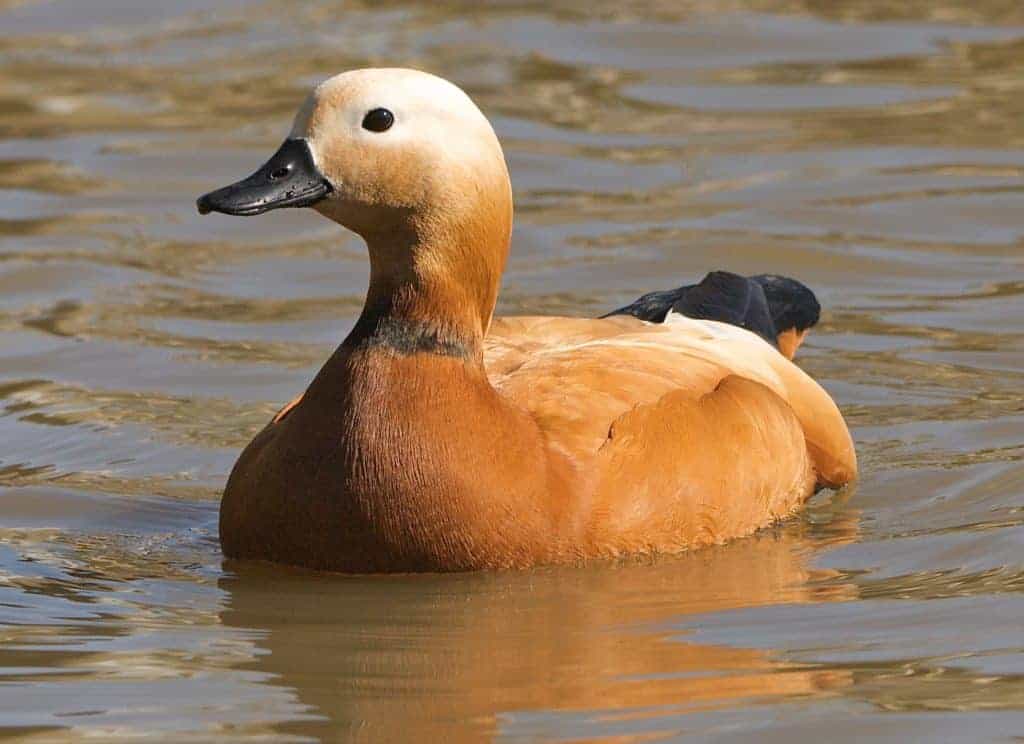Ruddy Shelduck

Burrow-type nest boxes with a pipe entrance are a favourite. Ruddy Shelduck may also use a raised nest box or hollow log, kennel, wigwam or possibly a surface-level box. Eggs are usually laid from mid-March to May.
Tadorna ferruginea
Ruddy Shelduck have a reputation for their aggressive, quarrelsome nature and so they do best in wildfowl collections with plenty of space. Their rich coppery-cinnamon plumage, pale buff head and black bill, legs and tail are both striking and unusual. To go with their bold nature, Ruddy Shelduck utter a very noisy nasal whooping call.
Ruddy Shelduck have a wide and varied habitat, but favour inland fresh water and are rarely seen in coastal habitats. They are often nocturnal in their feeding behaviour.

Ruddy Shelduck have varied nesting sites in their natural environment, from holes to crevices. Relatively easy to breed in captivity, they lay large clutches of 8-12 creamy-coloured eggs, incubating them for about 28 days. These shelduck are usually reliable incubators and excellent parents, with both parents defending ducklings from predators. The ducklings are not difficult to rear.
Share this page